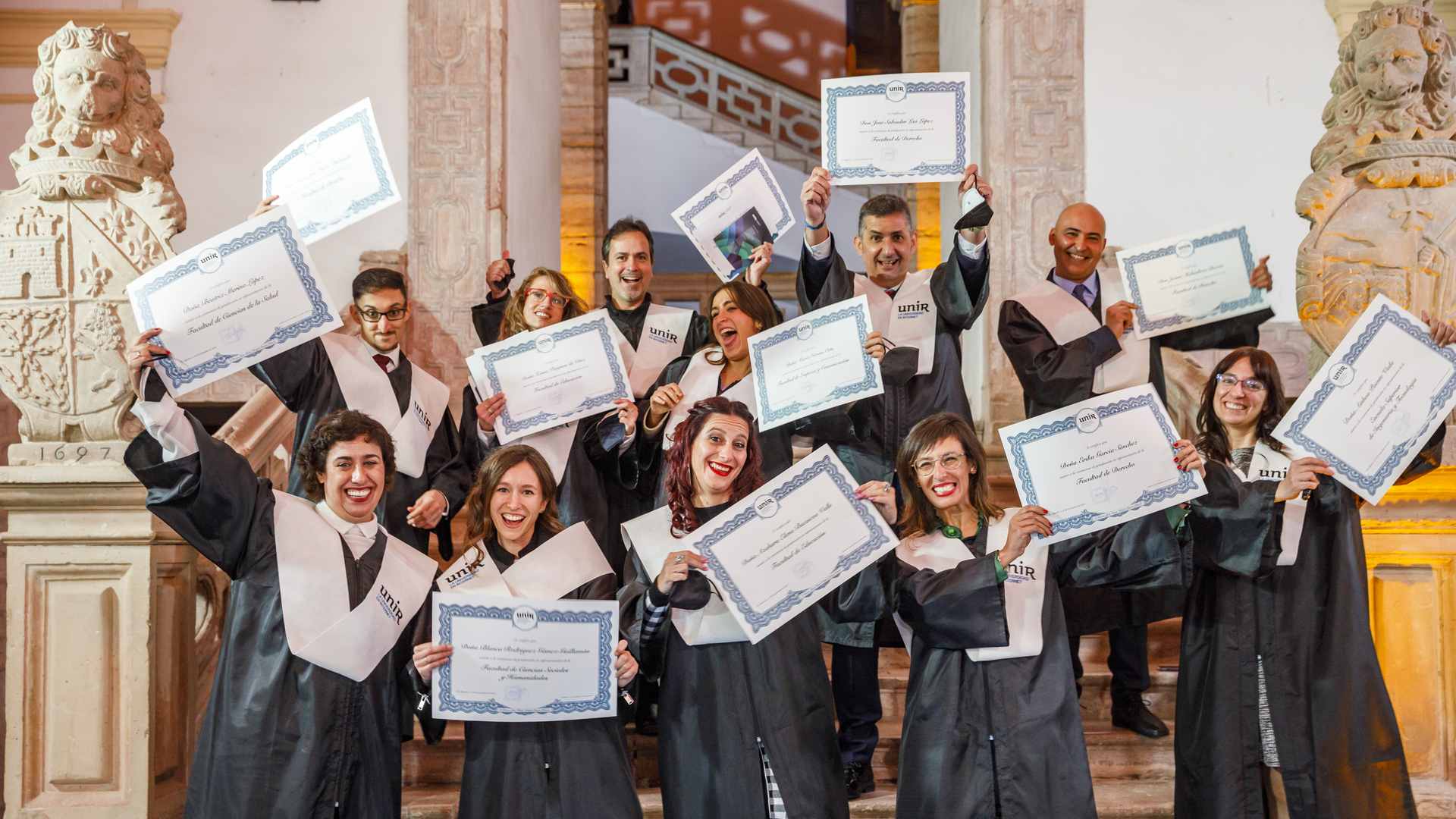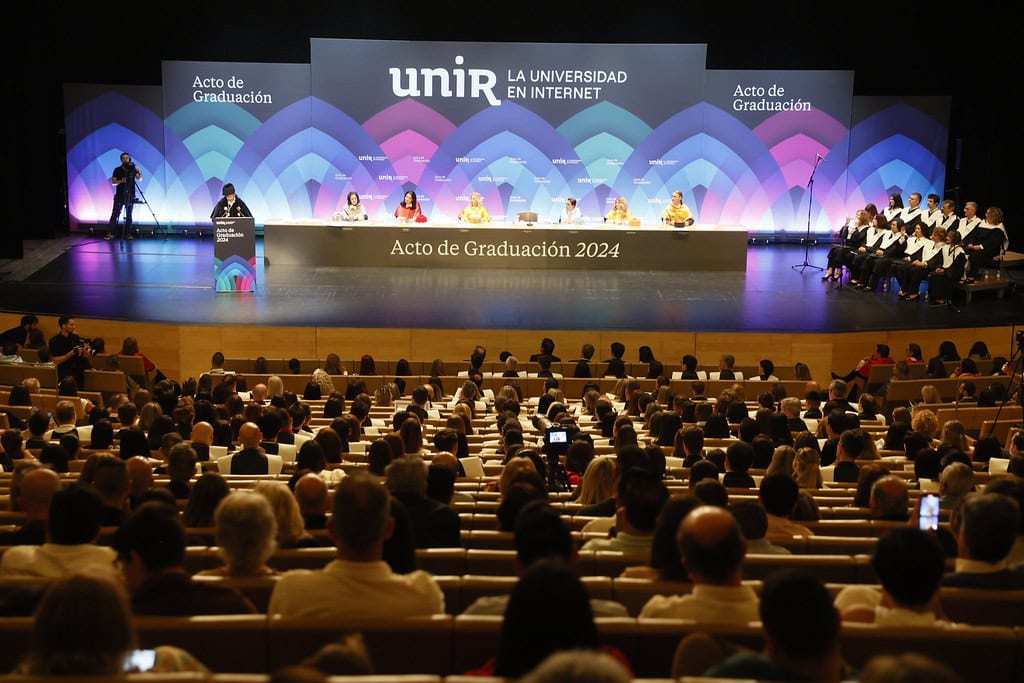Román Rodríguez Curbelo
Learning the Spanish language online is not difficult, nor is it impossible. Elena Merino, teacher of the next UNIR Spanish B1 Course, assures that this course has been designed to be fun and that your effort is worth it- especially since Spanish is one of the most widely spoken languages in the world.

We do our shopping online. We search (and find) apartments to rent and buy online, we choose our vehicles to rent and buy on the web. Thanks to the net we keep in touch with family and friends, we make connections and even go as far as look for the love of our lives. Why then could we not learn a language at a distance?
Elena Merino, a teacher at UNIR, explains that there are apps for learning languages, based on small routines. In any case, the apps are only complements to learning that must be holistic, that is, approached from different points of view. To learn Spanish successfully a comprehensive understanding working at different levels; at the visual, aural, and verbal… is needed.
A course based on the everyday
UNIR, the university on the internet, will offer its new B1 Spanish Course starting this June 2023. Students will have a whole series of content adapted to their level: listening, reading texts, all kinds of comprehension exercises, as well as a voice recognition tool and many videos to practice in a multimedia way.
Although the course will be launched soon, Merino points out that in other UNIR courses there are students of varied nationalities registered including students from Brazil, Italy, Romania…above all from America and Europe.
For everyone interested in learning Spanish, UNIR has designed and offers two versions of its B1 Spanish Course. An intensive course, which includes two live online classes per week with the teacher, each of the classes being an hour and a half long; the second option being the extensive course, one live online class per week, the class like in the intensive course being an hour and a half long. “These are somewhat longer classes than usual because we want to learn the language by practicing. You learn to speak by speaking; you learn to communicate by communicating”, adds Elena
Whether you decide to sign up to the intensive or the extensive course, students are expected to complete a series of coursework that will be later corrected by the teachers. Just one quirk: students will practice Spanish 2.0, the one of the Internet, focused on the common day to day uses.
On grammar
We aim to accelerate learning by bringing the learning experience closer to everyday life. Elena knows very well that this is the key to successfully teaching a language, she has spent her whole life teaching Spanish to foreigners. Elena was aware of her vocation to teach Spanish from a very young age where at 18 she was hired by a language school that was just under her parents’ house in Madrid capital, and although she went on to study journalism at University, she never stopped teaching Spanish to students from various continents, and in different places, such as France.

Elena sees each students as a whole world, and while she acknowledges that it is difficult to establish a common difficulty that all students share, she clearly distinguishes two grammatical issues that always require patience: tenses and the subjunctive.
For example: how do we explain the difference between comí, comía, he comido and había comido? “It’s not that simple,” says Elena. “In English you say I was there, that is, something like “estuve allí”. But in Spanish, there is not just one way of saying I was there, and there is clear distinction between “estuve allí” y “estaba allí”. How is this difference shown in class? It’s not that easy but for sure very much possible.”
“Estuve” and “estaba” do have differences. “Estuve” is the indefinite tense that we normally use to talk about actions. Time advances with the person: I arrived, ate, talked to my parents, played sports. “Estaba”, however, is used mainly for descriptions and habits in the past, it refers more to a space: the field was green, the sky was grey or the language school that was under the house of her parents.
And then we come to the subjunctive…. The subjunctive is rather complex.
Fun, difficulty, and importance
These are two aspects of Spanish grammar in which, according to Elena, you always must approach explicitly, something that is usually avoided when dealing with a field that can be as daunting as grammar.
This B1 Spanish Course, in fact, hosts a whole series of videos to break down these grammatical points and make them accessible, for all but especially for those students who approach them for the first time.
The central idea is to have fun as we learn. “I have had students who loved learning Spanish. Before anything else, we must have teachers who are enthusiastic and passionate about what they do, because their enthusiasm is transmitted to the students even through the screens: this has been proven the case many a time”, says the Elena.
We must remember that Spanish is not a complicated language- English is much easier, Elena explains that, according to various comparative studies between languages, Spanish poses a medium level of difficulty, less than other objectively more complex ones such as Chinese, Polish, or German.

Leaning Spanish is really worth it, it is an important language, very useful on any continent, and increasingly valued; academically prominent as well. It is spoken by almost 600 million people worldwide, and it is estimated that by 2050 there will be 820 million Spanish speakers. In addition, it is the second most studied non-native language in the world, only second to English!
Those interested in delving into this Romance language will have a unique opportunity to do so starting in June with the new UNIR Spanish B1 course.
Traducción al inglés: Joseph Xhuxhi, professor of Innovative Teaching, Teachers Professional Profile & Didactics of Natural Sciences in Primary Education. Doctoral students- Research EdD Escuela de Idiomas UNIR.
Hacemos la compra en un supermercado virtual. Buscamos (y encontramos) piso por internet, elegimos vehículo en una web. Gracias a la red mantenemos el contacto con familiares y amistades, nos relacionamos y hasta buscamos al amor de nuestras vidas. ¿Por qué no se podría entonces aprender un idioma a distancia?
Elena Merino, docente en UNIR, explica que hay aplicaciones para aprender lenguas muy válidas, basadas en pequeñas rutinas, que suman. En cualquier caso, son complementos a una formación que necesariamente debe ser holística, es decir, abordada desde distintos puntos de vista. Trabajar lo visual, lo auditivo, lo textual… La comprensión integral, a distintos niveles.
Un curso basado en lo cotidiano
UNIR, la universidad en internet, ofertará bajo esa premisa a partir de junio su nuevo Curso de Español B1. Dispondrá de toda una serie de contenidos adaptados a este nivel: audiciones, textos, todo tipo de ejercicios de comprensión, además de una herramienta de reconocimiento de voz y muchos vídeos para practicar de forma multimedia.
Aunque se lanzará próximamente, Merino detalla que ha habido nacionalidades muy variadas en otros estudios de UNIR dirigidos a extranjeros: brasileños, italianos, rumanos… América y Europa, sobre todo.
UNIR ha diseñado para todos ellos dos versiones del curso. Uno intensivo, de dos clases en directo con el profesor de una hora y media a la semana; y otro extensivo, que plantea una clase de hora y media a la semana. “Son clases algo más largas de lo habitual porque queremos que la lengua se aprenda practicando. A hablar se aprende hablando; a comunicar se aprende comunicando”, añade Merino.
Este curso plantea en su plan de estudios que los estudiantes elaboren una serie de actividades que serán posteriormente corregidas por los profesores. Con una peculiaridad: practicarán el español 2.0, el de internet, más apegado a los usos comunes del día a día.

Un poco de gramática
Acercar el español a lo cotidiano facilita el aprendizaje. Merino lo sabe muy bien: lleva toda su vida impartiendo clases de español a extranjeros porque su vocación se despertó desde muy pronto, cuando con 18 años la contrataron en la academia de idiomas que estaba debajo de la casa de sus padres. Y aunque estudió periodismo, nunca dejó de enseñar a estudiantes de varios continentes, y en distintos sitios, como Francia.
Por eso también entiende que cada alumno es un mundo. Reconoce que es difícil establecer una dificultad común que compartan todos, pero sí alcanza a distinguir dos cuestiones gramaticales que siempre requieren de paciencia: los tiempos verbales y el subjuntivo.
Por ejemplo: ¿cómo se explicar la diferencia entre comí, comía, he comido y había comido? “No es tan sencillo”, dice Merino. “En inglés se dice I was there, es decir, algo así como “estuve allí”. Pero en español se distingue entre “estuve allí” y “estaba allí”. ¿Cómo se muestra esta diferencia en clase? No es tan fácil”.
Estuve y estaba plantean sus diferencias. “Estuve” es el tiempo verbal indefinido que usamos normalmente para hablar de acciones. El tiempo avanza con él: llegué, comí, hablé con mis padres, hice deporte. “Estaba”, sin embargo, se utiliza sobre todo para descripciones y hábitos en el pasado, se refiere más a un espacio: el campo era verde, el cielo estaba gris o la academia de idiomas que estaba debajo de la casa de sus padres.
Y el subjuntivo… El subjuntivo es demasiado complejo.
Diversión, dificultad e importancia
Son dos aspectos de la gramática española en los que, según Merino, siempre hay que detenerse de forma explícita, algo que suele evitarse al tratar un campo que puede resultar tan hostil como la gramática.
El Curso de Español en B1, de hecho, acoge toda una serie de vídeos para desgranar estos puntos gramaticales y hacerlos accesibles, cuanto menos, a quien se aproxima a ellos por primera vez.
Porque la idea es divertirse. “He tenido estudiantes que amaban aprender español. Debemos disponer antes que nada de docentes entusiastas y apasionados con lo que hacen, porque ese entusiasmo se transmite incluso a través de las pantallas: eso está comprobado”, asegura la docente de UNIR.
El español tampoco es un idioma complicado. El inglés resulta mucho más fácil, por supuesto, pero Merino explica que, según diversos estudios comparativos entre lenguas, el español plantea una dificultad media, menor que otros objetivamente más complejas como el chino, el polaco o el alemán.
Y compensa: es un idioma relevante, muy útil en cualquier continente, y cada vez más valorado y con mayor peso académico. Lo hablan casi 600 millones de personas en todo el mundo, y se estima que en el 2050 lo harán 820 millones. Además, es la segunda lengua no materna más estudiada en todo el mundo, solo por detrás del inglés.
Aquellos interesados en adentrarse en esta lengua romance tendrán una oportunidad única a partir de junio con el nuevo curso de Español B1 de UNIR.






